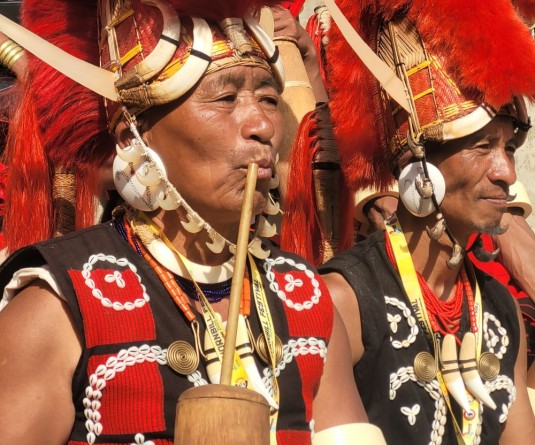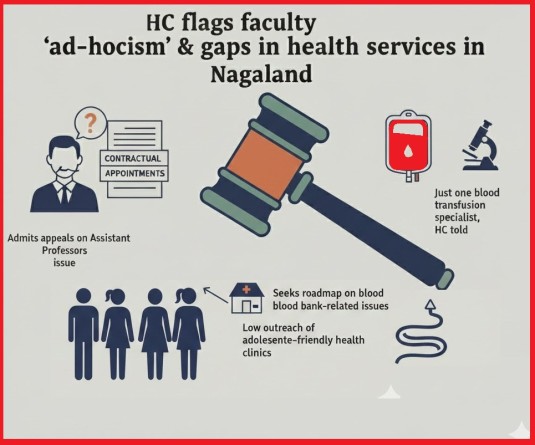
Longrangty Longchar
Anaki C/ Mokokchung
The crystal clear water flows gently through the reddish sandstone and dead foliage in the Loha River at Anaki C village in Mokokchung district near the Assam border. But, unlike other rivers, Loha River, despite its clear fresh water and location away from any close human habitation, does not have any fish and the water in this river is not fit even for drinking or washing clothes. The water has been contaminated by toxic wastes discharged from the coal mines on the hills above the village.
60 year old Mongnyei Phom, who founded Anaki village with a fellow villager in 1989, recollected that Loha River in the past had abundant fish, ‘some as big as adult human hands.’ “Though we really want to taste the fish found in this river we are unable to do so,” lamented M Phom.
Villagers blame toxic wastes from the coal mines above in the hills. The river now does not have even crabs and prawns, not to talk of fish, and the creatures cannot be found even up to the Assam side to which the river flows.
Besides, the villagers are not even using the water for domestic purposes. Water for drinking and other daily use is from a water source, about two kilometers away from the village in the hills and away from the coal mines. “The water (Loha water) has an acidic, sour taste and we cannot drink it or even wash clothes,” said a villager. Coal mining release approximately twenty toxic chemicals and a common ill-effect of coal mining is water pollution through a process popularly called Acid Mine Drainage (AMD).
Now the villagers are searching for another source to get drinking water into the village. Plans are on to extract coals from the present water source. The pipes for this purpose are being sponsored by an Assamese contractor involved in the coal business.
However, the woes of the villagers might be far from over - villagers disclosed that not only are the fish and drinking water being affected by the coal mining, even cultivated plants are also being affected. Villagers said that last year, they had a poor harvest and so they had to buy food grains from the town.
Rongsen Jamir, a Geography M.Phil student, who recently visited the area on some work, commented that unless the coal mining activity is stopped, the whole area would be left inhabitable in the future due to the toxic waste. Rongsen suggested to the villagers that it would be better for them to opt for other means of cultivation instead of extracting coals and contaminating the whole area.
Interestingly, the Anaki C area, which has been the focus of a recent Assam-Nagaland border conflict last year, has rich fertile soil; and the area is good for rubber and tea plantations, beetle nuts, and other cash crops. However, coal mining in the area, which apparently is unplanned and without taking any environmental precautions has left the people living in the area in a future of health and ecological predicament.
It may be reminded here that coal mining can cause water pollution called Acid mine drainage (AMD), a metal-rich water formed from the chemical reaction between water and rocks containing sulfur-bearing minerals.
Geologists say that while AMD usually forms in areas where coal mining has taken place, metal-rich drainage can also occur in mineralized areas that have not been mined. Besides, coal mining causes adverse environmental impacts: Release of methane, a greenhouse gas; interference with groundwater and water table levels; impact of water use on flows of rivers and consequential impact on other land-uses, release of dust; subsidence above tunnels and rendering land unfit for the common usage of the area.


.jpg)



